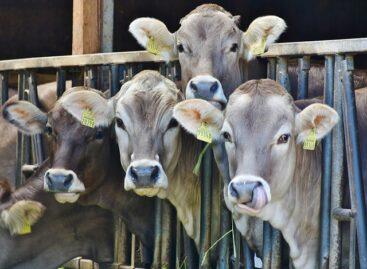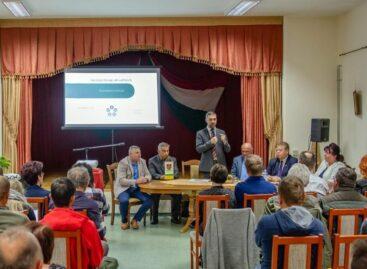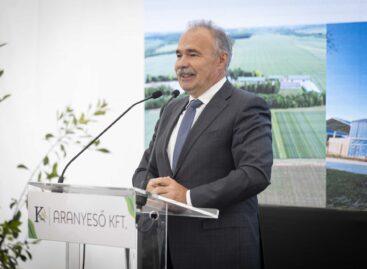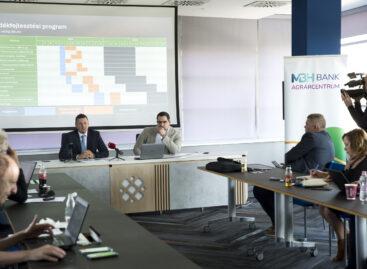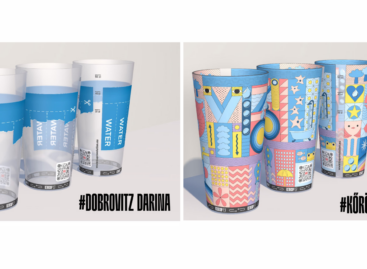Challenges and opportunities in animal husbandry – where is European animal husbandry going next?
The professional videos sub-section available on the website of the National Chamber of Agriculture has been expanded with a video entitled “SEBASTIEN project – Intelligent decision support system” with subtitles in Hungarian. The aim of the project is to create more efficient and sustainable animal husbandry. The situation of livestock breeding and the challenges facing the sector were also on the agenda the other day at the discussion organized by the European Livestock Voice (ELV), a group of like-minded EU partners active in the livestock food chain.

In recent years, the debates surrounding animal husbandry have become more and more intense between representatives of the sector and various civil organizations. The topic was also on the agenda of the discussion day recently held in Brussels by the members of the European Livestock Voice (ELV), a group of like-minded EU partners active in the livestock food chain. The aim of the event was to create a dialogue between scientists, politicians, civil society organizations and representatives of the private sector in order to find effective and practical solutions to the current challenges of our food systems and to promote the current polarization around animal husbandry. termination. Through healthy and balanced communication, the event offered a key opportunity for the representatives of the various organizations to work together on harmonizing the opposing views formed in connection with animal breeding and animal product production, which is an increasingly important goal. At the event, the participants of the panel discussions covered such sensitive topics as European animal welfare regulations, the environmental effects of animal husbandry, and the role of animal products in a healthy, balanced diet. The National Chamber of Agrarian Economy (NAK) considers it a priority task to balance the debates surrounding the livestock sector, as well as to restore the respect of farmers and product producers operating in the sector. This is also the purpose of the 37-episode video series published on the Facts/Misconceptions – Animal Husbandry professional video subpage, which provides a new perspective on misconceptions about animal husbandry, animal product production, ecology, ethology, and nutrition science through interviews with international experts.
Recently, a new category was added to the professional videos subpage available on the NAK website
ELV has published new communication material in which it presents the so-called SEBASTIEN project. In connection with the mitigation of climate change, the greenhouse gas emissions of animal husbandry and the reduction of emissions related to the sector are increasingly emphasized, therefore the European Union launched the SEBASTIEN project (Smarter LivEstock Breeding through Advanced) with the co-financing of the European Network Financing Facility (CEF – Connecting Europe Facility) Services Tailoring Innovative and multi-source data to users’ Needs). The aim of the initiative is to create a decision support system (DSS – Decision Support System) for the Italian animal husbandry sector – especially cattle, sheep and goat breeding. The new system can contribute to making animal husbandry more efficient and sustainable from an economic and environmental point of view. Although the project focuses primarily on animal husbandry in Italy, its results may also benefit other European Union sector players in the future. The essence of the system’s operation is that with the help of environmental, sectoral and other geospatial data files, the decision support system will be able to predict conditions that cause discomfort for the animals and warn the farmers to take action. The so-called in situ IoT sensors (IoT – Internet of Things) placed on the animals – electronic devices that are able to recognize some essential information and communicate it to another device via an Internet-based network – collect and measure real-time data related to the condition of the animals data such as body temperature, blood oxygen saturation, parameters related to the movement and body position of the animal, rest time and heart rate. The SEBASTIEN data portal is designed to enable the interoperability, sharing and reuse of data thanks to the harmonization of the data collected in it. The portal fully cooperates and is connected with the HIGHLANDER data portal, which is a website created in the framework of the European project on weather and climate data. NAK prepared the Hungarian subtitles for the video presenting the initiative aimed at creating more efficient and sustainable animal husbandry. The video subpage called “SEBASTIEN project – Intelligent decision support system” is available here.
NAK
Related news
New subsidies help animal breeders
The Ministry of Agriculture is supporting the sustainability of domestic…
Read more >With rising grain prices, it is not worth sitting on stocks
Cereal prices are rising on the European futures markets, so…
Read more >The value-creating developments in agriculture are implemented one after the other
In addition to creating a favorable regulatory environment, it is…
Read more >Related news
BH AgrárTrend Index: the outlook for the Hungarian food industry has stabilized
The assessment of the situation of the actors of the…
Read more >GVH: The postponement of certain amendments to the Competition Act is justified
The Economic Competition Authority (GVH) agrees with the postponement of…
Read more >We can drink from these RevoCups this year
More than 400 works were submitted to the VÍZió graphics…
Read more >

